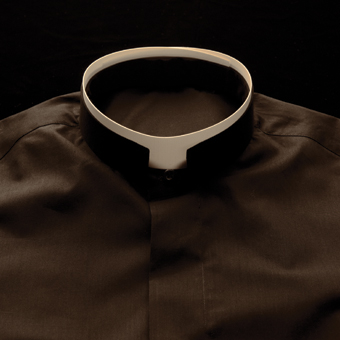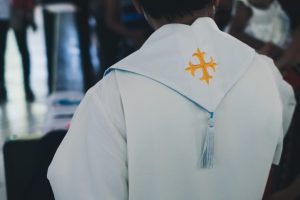Over the last several years, priestly ordination classes have gotten younger and more diverse, according to a 2011 study by the Center for Applied Research in the Apostolate out of Georgetown University.
There are more Asian and black vocations. Asians are actually overrepresented, making up 4 percent of the U.S. Catholic population and 10 percent of the ordination class.
But, perplexingly, that isn’t the case with Hispanics.
Whereas Hispanics make up some 40 percent of the Catholic population in the United States and more than half of Catholics under 25, only 15 percent of those being ordained are Hispanic. And when it comes to the ratio of U.S.-born Hispanic priests to U.S.-born Hispanic Catholic laity, the situation is even more lopsided: According to statistics from the Instituto Fe y Vida, that ratio stands at an alarming 1:27,000—an amazing 20 times worse than the ratio for priests to Catholic laity in the U.S. in general.
“It’s a huge issue,” says Carmen Aguinaco, director of the Claretians’ Hispanic Ministry Resource Center in Chicago. “Hispanic leadership has not been cultivated. There are few Hispanic bishops and too few Hispanic priests.”
Many Hispanic Catholics who answer the call to the priesthood are immigrants. Nearly a third of this year’s ordination class was born in a foreign country, many coming from Mexico and Colombia.
“For many young people, the idea of having a vocation is alien to them because they’ve been told, in different ways, that they’re not worthy,” Aguinaco says, explaining that young Hispanics often don’t believe they can be leaders. Many have to break with a classist upbringing. Aguinaco’s center (which, like U.S. Catholic magazine, is part of Claretian Publications) publishes a free annual magazine called ¡Oye! that focuses specifically on vocation and leadership development for young Hispanic Catholics (see oyemagazine.org).
While Spanish-speaking priests overcome the language issue, foreign-born Hispanic priests aren’t the answer.
Young Hispanic Catholics “don’t see themselves totally in the Anglo culture nor totally in the Hispanic church,” Aguinaco says. The majority of Catholics under 19 are Hispanic, and they need priests they can identify with. They need priests to strengthen Hispanic youth ministry programs, which Aguinaco says are generally “pathetic.”
Father Carlos Gomez-Rivera, pastor of St. Augustine Church in Phoenix, notes that priests born in Spanish-speaking countries have a variety of cultural backgrounds. “They all have different roots,” he says, “too many to count!”
Giving a child to God and giving up future nietos (grandchildren) is something Hispanic parents are generally not interested in, Gomez-Rivera says. It’s practically counterintuitive for these families to foster a culture of vocations. “Family is very important, sometimes even more than other aspects of life,” he says. “Hispanics want to remain as close as possible to each other. Even when their children get married, parents look for the best way to keep them close.”
That’s all coupled with immigration-related issues. Many Hispanic Catholics come from families of mixed legal status, where some members are U.S. citizens or legal residents and others are undocumented. While some dioceses will send undocumented seminarians abroad for formation, being away from family is too hard for many, says Gomez-Rivera.
Aguinaco says many young Hispanics lack priestly role models. Many are interested in being more involved with the church, but church leadership isn’t giving them enough attention. “They’re simply not being invited to consider a vocation to the priesthood,” she says.
Legionary Father José Helio Cantú Moreno, who serves Hispanic Catholics in Queen Creek, Arizona, says the invitation is key. “Whether it be American or Latino, we must cast out our nets,” he says. “We have to be an authentic, joyful testimony to consecrated religious life. If we want young people to respond, we must search for them and ask.”
This article appeared in the September 2011 issue of U.S. Catholic (Vol. 76, No. 9, pages 34-35).
Image: Tom Wright














Add comment